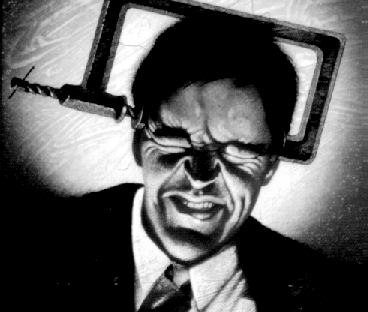|
|
Headaches Making You Miserable?Research: Studies show that women and holders of advanced degrees suffer more frequently
Lisbeth Pettengill |

 Every day millions of Americans dutifully slog off to their
jobs and park themselves at their desks even though they know
they're not able to work with all four cylinders firing. They
suffer from tension headaches.
Every day millions of Americans dutifully slog off to their
jobs and park themselves at their desks even though they know
they're not able to work with all four cylinders firing. They
suffer from tension headaches.
Researchers at the Hopkins School of Public Health now know something more about them: Specifically, women get more tension headaches than men, and people with advanced degrees suffer from them more frequently than the less educated.
This year, for the first time, researchers tracked the frequency of tension headaches as well as their effect on people's lives. Using criteria set up by the International Headache Society, Brian Schwartz, associate professor of environmental health sciences, asked a randomly selected group of 13,345 people in Baltimore County about the type, frequency, duration and impact of the headaches they'd experienced over the previous year.
The study, which was the first large-scale population survey in the United States to describe the epidemiology of tension-type headaches, was published in the Feb. 4 issue of the Journal of the American Medical Association.
Part of Schwartz's research dealt with distinguishing between migraines and everyday headaches.
"There's a distinct difference between migraines and tension-type headaches," Schwartz says. "Migraine is a specific disease, with genetic links; far less is known about tension-type headaches." Schwartz wanted to see if the two differed epidemiologically, or if they were merely the same headache on two different parts of the pain spectrum.
"Our study," he says, "shows that these are two different phenomena."
First, the type of pain differs. A migraine is usually felt as a throbbing on one side of the head, and the victim may be highly sensitive to light and sound. Often migraine sufferers experience nausea and vomiting. In contrast, tension-type headaches feel like a band of pain is encircling the head, but without throbbing or nausea.
According to the study, women have 20 percent more tension headaches than men, and they are three times more prone to migraines than men.
Schwartz also found that tension headaches are related to education levels, with the frequency of episodic tension-type headaches tending to increase with the amount of education a person has had. Those with advanced degrees had the most episodic tension headaches. Over 48 percent of both men and women with a graduate degree reported having ETTHs, compared to approximately 20 percent of those with a grade school education.
This association was not found with chronic tension-type headaches, defined in this study as headaches that occurred at least 15 times a month. Chronic tension-type headaches decreased with the amount of education the headache sufferer had.
The elevated incidence of headaches among highly educated people, coupled with numbers showing that headaches occur most often for people age 30 to 50--peak working years--led Schwartz to speculate that people's jobs might be triggering many headaches. "Job demands, duties, stresses and responsibilities differ among persons with different educational levels, and these factors may play a role in the development of tension headaches," Schwartz says.
Work-related or not, tension headaches do cause a loss of productivity at the office and at home. Of those whose headaches met the strict definition for tension-type headaches, 8.3 percent said that they had stayed home from work because of the pain. Persons who had lost time because of ETTHs reported losing a total of 8.9 workdays, and persons with decreased effectiveness at work lost five days each. In addition, 43.6 percent said that they were less effective not only at work but at school and in their personal lives.
"The next step," Schwartz says, "is to raise the consciousness of employers about what the high prevalence of tension-type headaches means to their bottom line. When people are in pain, productivity suffers. By helping them prevent or manage their headaches, we can save the employer money and make the employee feel better."
Schwartz and his colleagues have already approached several large employers in the area to see about starting interventions. Using packaged workplace headache management programs, Schwartz hopes to be able to teach people how to recognize the type of headache they have and then how to deal with it.
First, he says, people must be able to recognize the difference between migraine and tension-type headaches, and, second, they need to learn to recognize triggers for the pain. For some it may be stress, but for others it could be diet, too many hours at the computer or a sensitivity to light. Finally, people need to learn how to manage the pain.
Schwartz believes that the masses of headache sufferers deserve help, and that help is available. With today's wide range of over-the-counter medicines, most episodic tension-type headaches can be alleviated, he says. "No one has to suffer in silence."
| GO TO FEBRUARY 23, 1998 TABLE OF CONTENTS. |
| GO TO THE GAZETTE HOMEPAGE. |